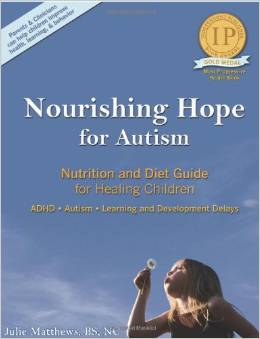What Is the Low-FODMAP Diet?
FODMAP is an acronym for a class of easily fermentable, short-chain carbohydrates that tend to be difficult for some people to digest. The idea with the low-FODMAP diet is to temporarily restrict these types of carbohydrates, not only to relieve negative gastrointestinal symptoms such as bloating gas, constipation, diarrhea and cramping, but to also give the gut lining an opportunity to repair itself and to restore a healthy gut balance in the microbiome.
These are short-chain carbohydrates that need to be restricted in the low-FODMAP-diet, hence the acronym FODMAP:
- Fermentable: These are foods that are broken down (fermented) by microbes in the large intestine.
- Oligosaccharides: These are foods containing fructans and galacto-oligosaccharide sugars found in some vegetables, grains and legumes.
- Disaccharides: This refers to lactose, a sugar found in milk and dairy products.
- Monosaccharides: These simple sugars are fructose found in fruits, honey, and high-fructose corn syrup, for example.
- Polyols: These are sugar alcohols such as sorbitol, mannitol, xylitol, maltitol that are found in some fruits, vegetables and sugar-free products.
So, what do these terms mean? These are short-chain fermentable carbohydrates simply known as “the sugars” that are poorly digested in the small intestine, causing people to have gastrointestinal symptoms such as diarrhea, cramping, bloating, gas, constipation and abdominal pain.
There is a distinction between high-FODMAP foods and low-FODMAP foods. High-FODMAP foods may be more difficult for some individuals to tolerate, while low-FODMAP foods are generally more tolerable.
The low-FODMAP diet is not intended to be a weight-loss diet, but some people do lose weight because of food restrictions. Ideally when limiting carbohydrates, one should go slowly and cautiously with some precision because there is a fair amount of elimination in a low-FODMAP diet.
The idea is to eliminate the foods that produce gastrointestinal symptoms and slowly reintroduce these foods back into the diet one at a time to see which foods produce the most symptoms. This is why it is advisable to be under the guidance of a doctor, gastroenterologist or registered dietician.
Why Follow a Low-FODMAP Diet?
Having altered bowel habits can be very embarrassing, stressful and difficult for anyone experiencing gastrointestinal disorders. People with the following gastrointestinal disorders may benefit from the implementation of a low-FODMAP diet:
- IBS (Irritable Bowel Syndrome)
- SIBO (Small Intestine Bacterial Overgrowth)
- Leaky Gut Syndrome (LGS)
- Intestinal motility disorders
- Diverticulitis
- SIFO (small intestinal fungal overgrowth)
- Yeast overgrowth
- Ulcerative colitis
- Crohn’s disease
- Celiac disease
- Inflammatory bowel disease (IBD)
When an individual has a gastrointestinal disorder, such as the ones listed above, the ability of the vagus nerve to have healthy communication with the brain is negatively affected. When this happens, neurological symptoms may arise such as:
The temporary low-FODMAP diet offers an option to help heal the gut microbiome so that the brain can also heal.
How a Low-FODMAP Diet Can Help
When a food aggravates the gut, the most obvious conclusion is that an individual is most likely sensitive to this food. However, that does not mean this sensitivity will last forever. Keep in mind that as the microbiome is healed, the body and brain begin to heal as well, changing the dynamic of the gastrointestinal terrain.
The goal here is to heal the microbiome so that the vagus nerve can do its job bringing the important messages from the gut to the brain by healing the gut/brain connection. In addition to lowering gastrointestional symptoms, individuals with a sensitivity to high-FODMAP foods often report some or many of the following improvements in neurological symptoms:
- Lower brain fog
- Better memory
- Better cognitive functioning
- Less anxiety
- Less depression
What Are High-FODMAP Foods?
The following foods should be avoided by an individual following a low-FODMAP diet.
- Dairy-based foods such as milk, yogurt, pudding, cottage cheese, unaged cheeses and ice cream
- Wheat-based and rye-based foods such as cereals, breads and crackers
- Fiber such as inulin
- Legumes such as chickpeas, lentils, kidney beans, soybean-containing foods
- Certain vegetables such as artichokes, asparagus, beetroot, broccoli, Brussel sprouts, onions, garlic, cauliflower, mushrooms and snow peas
- Certain fruits such as apples, cherries, pears, mangoes, watermelon and peaches
- Honey
- Isomalt in sugar-free gum, candies, cough medicines and drops
- Agave
- High-fructose corn syrup
What Are Low-FODMAP Foods?
The following foods are generally well-tolerated by those on a low-FODMAP diet:
- Eggs, fish, poultry, tofu, red meat, unprocessed meats
- Aged cheeses such as brie, Camembert, cheddar and feta
- Almond milk and other dairy alternative products
- Almonds, peanuts, macadamia nuts, sunflower seeds, pinenuts
- Gluten-free grains such as brown rice, quinoa and oats
- Vegetables such as eggplant, potatoes, tomatoes, cucumbers, zucchini, leafy greens, squash, sweet potatoes, bell peppers, carrots, lettuce, arugula, bamboo shoots, ginger, spring onions, turnips
- Sweeteners brown sugar, maple syrup
- Fruits such as grapes, oranges, strawberries, blueberries and pineapple, avocado, bananas, lemons and limes, olives
When Should a Low-FODMAP Diet Be Avoided?
A low-FODMAP diet is often recommended for individuals with IBS or SIBO. However, because there may not be enough nutrients in a low-FODMAP diet, the following types of patients should consult with a knowledgeable practitioner to assess if a low-FODMAP diet is appropriate:
- Pregnant women
- Children
- Individuals with a history of an eating disorder. Because a low-FODMAP diet is restrictive, it could possibly trigger an eating-disorder reoccurrence.
- People with celiac disease or inflammatory bowel disease (IFB)
What Else Can Help Heal the Gut?
Healing the gut is not always as simple as implementing a specialized diet, although it is often a necessary step. Healing the gut can also entail:
- Eating a clean diet
- Eliminating food sensitivities and intolerances
- Following a gut-healing diet
- Eating foods specific for gut healing
- Potentially incorporating the right nutritional supplements
- Eating good fats
- Optimizing stomach acid
- Potentially taking enzymes to improve digestion
- Encouraging good bile flow
- Supplementing prebiotics and probiotics to increase beneficial gut flora
- Improving liver detoxification
- Considering a fecal transplant
Conclusion
There is no doubt that a low-FODMAP diet has the potential to help reduce symptoms of many gastrointestinal disorders. However, a low-FODMAP may be too restrictive a diet for some individuals depending on their personal circumstances and health situation.
We recommend that you consult with a knowledgeable practitioner about the level of FODMAP foods that are helpful for your child before beginning a low-FODMAP diet. This diet is used as a temporary diet to help resolve gastrointestinal symptoms and allow the gut to heal by giving it a rest from processing more-difficult-to-digest foods.
About Teresa Badillo
In the 1980s she worked overseas in Rome, Italy at the Japanese Embassy in the office of the United Nations (FAO) as a speech writer. She also began her long journey in alternative healing while living in Rome.
After moving to New York and while raising her family of seven children, Teresa embarked on a mission to find alternative non-invasive biomedical, therapeutic, sensory and educational solutions for autism after the diagnosis of her son in the early 1990s.

She won a court case in 1995 against the Rockland County School District in New York to enable ARC Prime Time for Kids to be the first school using Applied Behavioral Analysis teaching method for autism that was paid for by the Rockland County School District. The following year she was instrumental in getting the New York Minister of Education to approve an extension of the ARC license from 5 to 21 years.
She has worked over the years in a number of alternative medical practices with doctors and practitioners organizing various biomedical intervention options for children with autism. Since the mid 1990s, Teresa has served on several boards:
- Foundation for Children with Developmental Disabilities
- The Autoimmunity Project
- Developmental Delayed Resources
- Epidemic Answers
She continues to consult and advise parents on all different areas of autism especially nutritional protocols. Since 2006 she has worked with NutraOrgana, LLC and BioCellular Analysis Testing. She currently researches, writes the newsletter and blogs Teresa’s Corner for The Autism Exchange (AEX). She also writes blog posts and pages for Documenting Hope.
Still Looking for Answers?
Visit the Documenting Hope Practitioner Directory to find a practitioner near you.
Join us inside our online membership community for parents, Healing Together, where you’ll find even more healing resources, expert guidance, and a community to support you every step of your child’s healing journey.
Sources & References
Achufusi, T.G.O., et al. Small Intestinal Bacterial Overgrowth: Comprehensive Review of Diagnosis, Prevention, and Treatment Methods. Cureus. 2020 Jun 27;12(6):e8860.
Black, C.J., et al. Efficacy of a low FODMAP diet in irritable bowel syndrome: systematic review and network meta-analysis. Gut. 2022 Jun;71(6):1117-1126.
Marsh, A., et al. Does a diet low in FODMAPs reduce symptoms associated with functional gastrointestinal disorders? A comprehensive systematic review and meta-analysis. Eur J Nutr. 2016 Apr;55(3):897-906.
Popa, S.L., et al. Diet Advice for Crohn's Disease: FODMAP and Beyond. Nutrients. 2020 Dec 6;12(12):3751.
Satta, P.U., et al. FODMAP Diet in Celiac Disease and Gluten-Related Disorders. Nutrients. 2024 Dec 4;16(23):4190.
Schumann, D., et al. Low fermentable, oligo-, di-, mono-saccharides and polyol diet in the treatment of irritable bowel syndrome: A systematic review and meta-analysis. Nutrition. 2018 Jan:45:24-31.
Turco, R., et al. Does a low FODMAPs diet reduce symptoms of functional abdominal pain disorders? A systematic review in adult and paediatric population, on behalf of Italian Society of Pediatrics. Ital J Pediatr. 2018 May 15;44(1):53.
Uno, Y., et al. Logical hypothesis: Low FODMAP diet to prevent diverticulitis. World J Gastrointest Pharmacol Ther. 2016 Nov 6;7(4):503-512.
van Lanen, A.S., et al. Efficacy of a low-FODMAP diet in adult irritable bowel syndrome: a systematic review and meta-analysis. Eur J Nutr. 2021 Sep;60(6):3505-3522.
Resources
Articles
Axe, Josh. The Leaky Gut Diet and Treatment Plan, Including Top Gut Foods. Dr. Axe, 26 Jun 2024.
Baker, Sian. Low-FODMAP Diet Guide. Check My Body Health, 14 May 2025.
Low FODMAP Diet. Cleveland Clinic.
McCoy, Kathleen. Do You Have SIBO Symptoms? Here Is ALL You Need to Know! Dr. Axe, 4 Jun 2018.
Miller, Korin. What Exactly Is The Low-FODMAP Diet And How Do You Do It? Women's Health, 11 Jan 2022.
The Low FODMaP Diet. U.S. Department of Veterans Affairs.
Try a FODMAPs diet to manage irritable bowel syndrome. Harvard Health Publishing, Harvard Medical School.
Veloso, Hazel. FODMAP Diet: What You Need to Know. Johns Hopkins Medicine.







